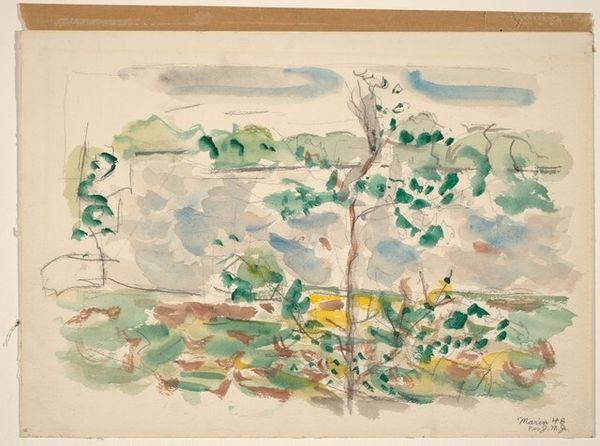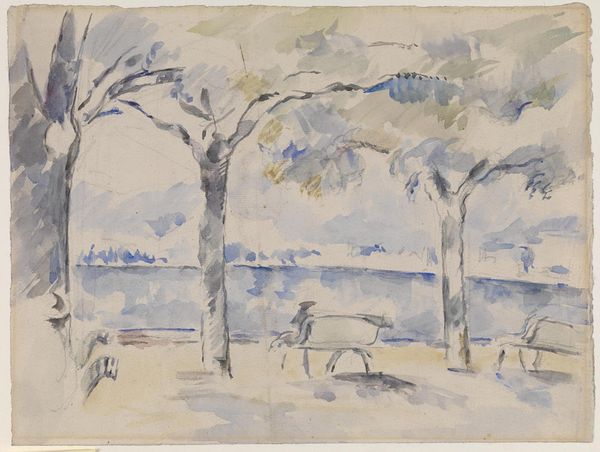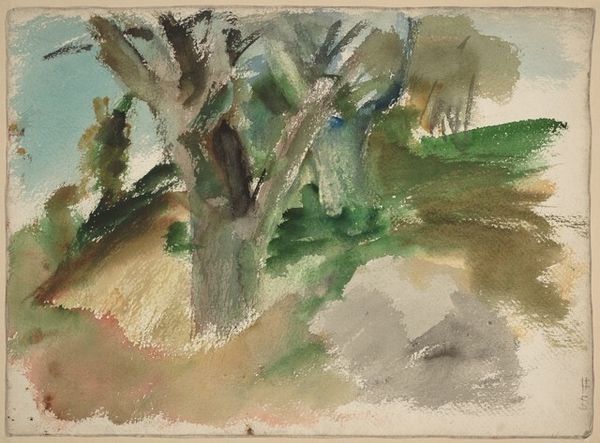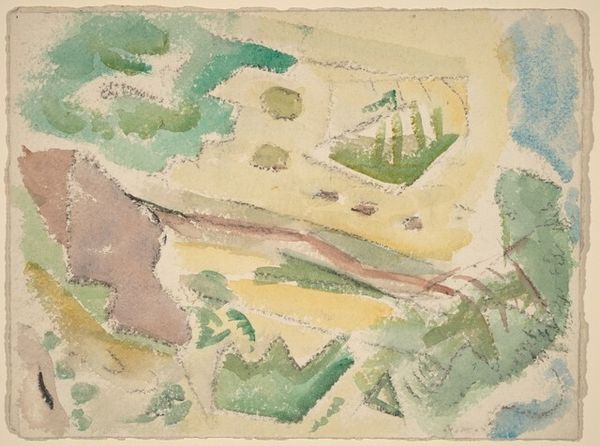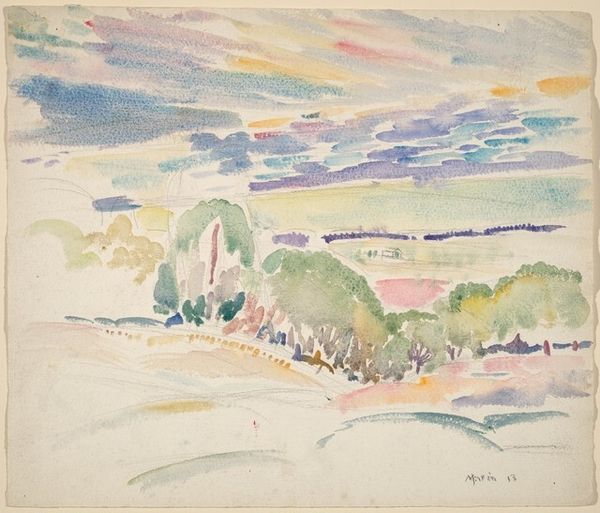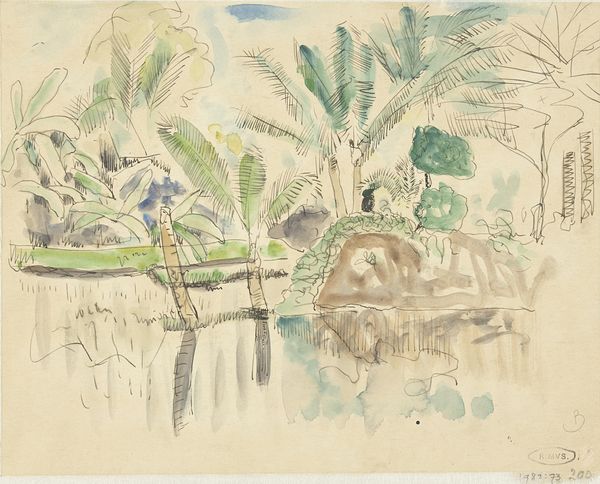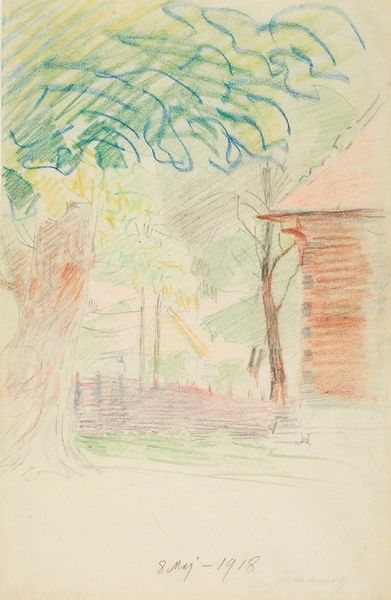
drawing, plein-air, watercolor
#
drawing
#
plein-air
#
landscape
#
figuration
#
watercolor
#
realism
Dimensions: overall: 37.9 x 53.4 cm (14 15/16 x 21 in.)
Copyright: National Gallery of Art: CC0 1.0
Curator: Welcome. Here we have Mark Rothko’s watercolor and drawing on paper, "Cows in a Landscape", created around 1929. Editor: Oh, wow, that's earlier than I expected from Rothko. It has a quiet feel to it, a pastoral dream almost. Kind of surprising considering what he later became known for, right? Curator: Precisely. It's an insightful juxtaposition to his later abstract expressions. Here, the structure is based on identifiable forms: cattle in the foreground, a quaint countryside punctuated with buildings nestled into an open vista. The perspective operates traditionally enough with compositional depth built through layered planes of color. Editor: Planes of color is so right. See how he defines those cows with just the faintest touches? The landscape is implied more than declared, isn't it? Almost as if the scene is remembered, not directly observed. Sort of like a fleeting impression. It feels very... personal, like peeking into someone's happy memory. Curator: We might consider his application of the watercolor medium itself. The diluting and layering allows the white of the paper support to remain visible. It's this layering technique that establishes tonal variation across the image plane. It establishes a visual tension with Rothko’s commitment to figuration here. Editor: Figuration. Right, there are definitely cows, but it's also drifting. Like the shapes want to become something else. The houses are little blobs. This reminds me how reality blurs, even during daytime! It captures the inherent vagueness of trying to hold onto a complete picture in the mind. And the whole plein-air feeling is strong; you can almost sense the air on your skin and sunlight in the meadow. Curator: In a similar vein, the rendering and coloring do echo characteristics inherent to the stylistic traditions of Realism. The idyllic subject matter suggests pastoral scenes, perhaps intentionally calling to the tradition of landscape paintings in western art. Yet, one senses Rothko stretching, pushing the boundaries to a different mode of perception. Editor: He certainly did. It's kind of comforting seeing where he started. Even the greats take routes you don't expect. Maybe this even holds a lesson of valuing simple observations before you attempt abstractions of them! Curator: Indeed. This "Cows in a Landscape" acts as a visual anchor. Considering its place within Rothko’s career, one gains insight regarding artistic development, technique, and even potential motifs present throughout his oeuvre. Editor: What an insightful glimpse into the roots of his later artistic pursuits. Made me feel I was seeing something sacred.
Comments
No comments
Be the first to comment and join the conversation on the ultimate creative platform.

